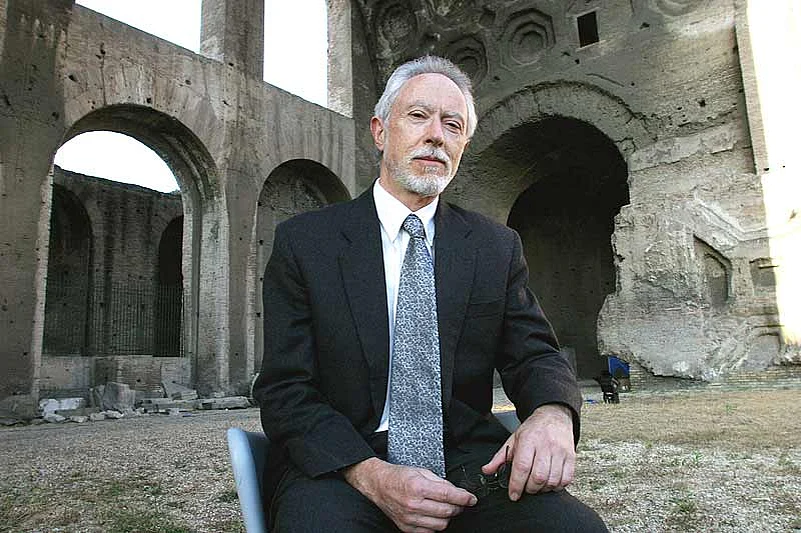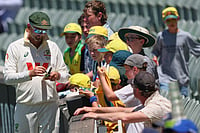Most novelists tend to mine the seam of one genre or mode for the duration of their literary careers but it is necessary, and fruitful, to sift J.M. Coetzee’s fiction oeuvre into separate categories: the realism of The Life and Times of Michael K and Disgrace; the autobiographical fiction of Boyhood, Youth and Summertime; the fable of Waiting for the Barbarians; the philosophical novels Elizabeth Costello and Slow Man. His latest novel, The Childhood of Jesus, situates itself, teasingly, between fable and the philosophical novel, and yet the title alone applies a destabilising torsion to that positioning: it directly sets up the expectation that you’re going to get Coetzee’s imagining of Jesus’s childhood, notoriously missing from all four Gospels, and then proceeds to deceive that assumption. Or not exactly deceive; the upper partials consist of echoes and witty transpositions of themes, phrases, images and ideas from the Gospels but the moment you strain to make more of them, or pin them down to a unitary meaning, they vanish.
Simon, a middle-aged man, and David, a five-year-old, arrive in a new land, after crossing oceans, to start a new life. They are held at a camp, Belstar, where they’re given lessons in Spanish, the language of the new country, and provided with new names and ages; their pasts have been wiped clean. The novel opens with Simon and David arriving at Novilla, the city where they are to be housed. Simon, who begins work as a stevedore in a wharf, loading and unloading sacks of grain, is determined to find the boy’s mother. He has no information to go on but is convinced he will know her the moment he sees her. And so it transpires—he sees a woman playing tennis with two men in the court of a gated residence and his choice alights upon her. What follows is the strangest Annunciation ever—the selection of a mother for a son already immanent—and one of the more startling illustrations of Viktor Shklovsky’s concept of ‘ostranenie’, or defamiliarisation, in the way it makes new, and newly unorthodox, the commonest story of Western civilisation.
Ynes—the meaning of whose name (pure, holy) is not lost on Simon—proves herself to be a possessively adoring and headstrong mother, attempting to exclude Simon from her enclosed world with the boy. Simon, meanwhile, discovers the strangeness of his new country in the company of his fellow stevedores. The people here, all arrived from a different place, which they do not remember, are full of goodwill (an oft-repeated word in the book) but seem to lack passion. They seem to be too square, too tepid, too earnest and positivistic, lacking irony, or any understanding of the mess and heave of emotions and passions. Their bean pastes are saltless, their tomato sauce simply crushed tomatoes without any seasoning. A drily funny episode in which Simon, looking for sexual relief, is directed to the town’s ‘Leisure and Recreational Centre’—offering ‘Personal Counselling. Stress relief. Physical Therapy’—and finds himself filling out forms, encapsulates perfectly the club-footed yet best-intentions nature of this utopia.
For a kind of utopia it is, and Coetzee is opening up a conversation with, say, Sir Thomas More, and other writers who have dealt with the nature of utopian worlds: what would the best of all possible worlds look like? Is it even desirable? Simon, the only bewildered migrant in the new world where everyone is content, unquestioning and full of goodwill, wants somewhat more. Is it only possible to be happy in a utopia where no memories exist of a non-utopian life? What happens to the anomalous or the dissenting in a world where everything is, and can be, explained and conflicting views are non-existent?
Then there is the matter of the title and those ghostly refractions of the New Testament. A schoolteacher asks David to write ‘I shall always tell the truth’ on the blackboard; David writes instead ‘I am the truth’. The boy asks Simon if he, Ynes and Simon are a family, to which he replies, ‘A sort of family...the family of David’. The boy wants, more than anything else, to be a magician, a saviour; those Gospel echoes keep on sounding. Could Coetzee be pulling together and braiding two normally antagonistic strands, the spiritual or the domain of things inexplicable by reason alone on the one hand, and the fiercely, doggedly rational order of things on the other, to see what new sets of meanings emerge? This interpretive indeterminacy, a joyous, ruling principle of the novel, results in copious possible questions (and answers); writing doesn’t get more capaciously intelligent than this.
And yet, the relation Coetzee’s variation on Christ’s story bears to the original texts is much the same relation as blood bears to the food we eat. For the book is not a retelling (like the Pilate sections of The Master and Margarita), or a reimagining (like Saramago’s The Gospel According to Jesus Christ), but a transubstantiation.
Meanwhile, Ynes and Simon are summoned by David’s school and told that the boy is rebellious, unwilling to accept the authority of the teacher. After an examination by a psychologist, it is recommended that he be sent to a special school far away from Novilla, with visits back home permitted only every two weekends. Ynes is inflexible in her opposition to this and enlists Simon’s help to escape to a different town, across the mountains. The new life in Novilla has proved restrictive; does the possibility of another one exist elsewhere?
The allegorical feel of the novel achieves something elusive, at times even mystifying, but also something else: because allegory is an intermittent and fugitive mode, not a matter of unflagging one-to-one correspondence, it frees the writer into glorious play. It would do, then, to be reminded again what a profoundly playful—and funny—novelist Coetzee can be. Think of the glorious, sometimes uproarious, mischief he makes with the project of biography in Summertime. Or think of the playfulness in another register, in the allusive, mysterious rewriting of both the Robinson Crusoe story—the birth of the novel—and the quietly revolutionary reimagining of its authorship in Foe. The Childhood of Jesus is the companion volume to Foe, pushing the boundaries of the form into the birth of something new.
(Neel Mukherjee is the author of Past Continuous. His second novel, The Lives Of Others, is out next year)


























